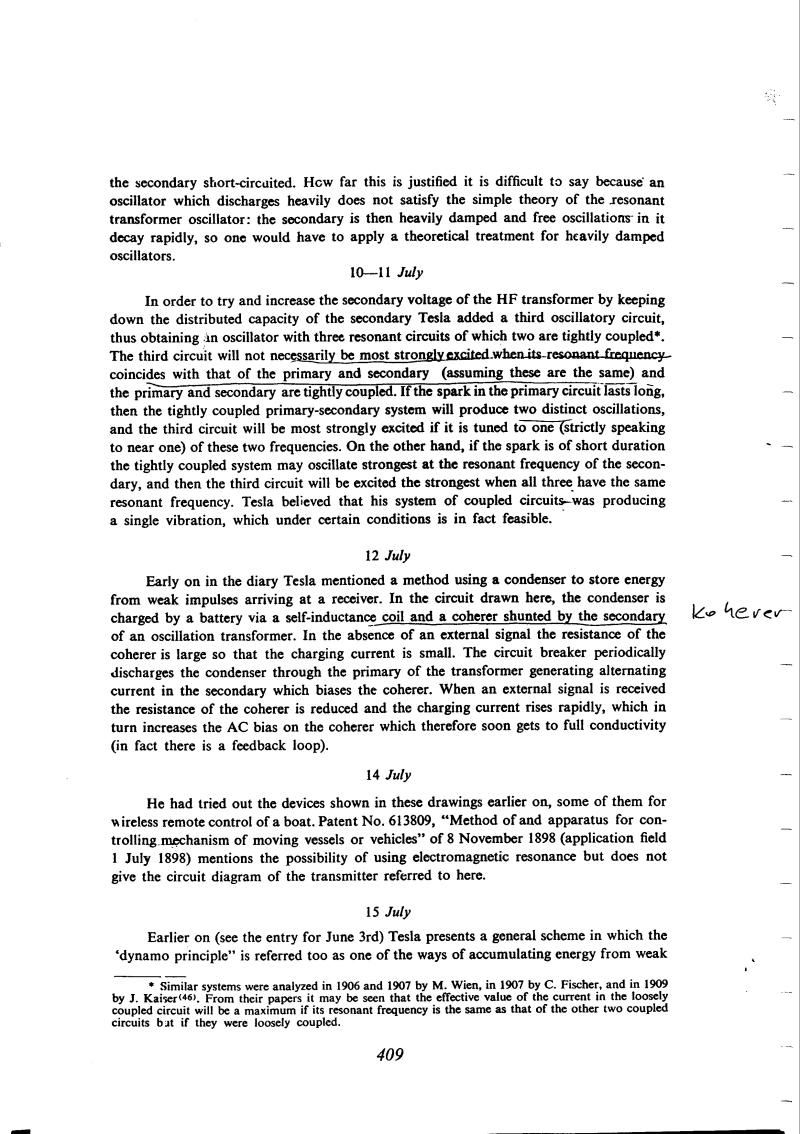July 10-11
In order to try and increase the secondary voltage of the HF transformer by keeping down the distributed capacity of the secondary Tesla added a third oscillatory circuit, thus obtaining an oscillator with three resonant circuits of which two are tightly coupled*. The third circuit will not necessarily be most strongly excited when its resonant frequency coincides with that of the primary and secondary (assuming these are the same) and the primary and secondary are tightly coupled. If the spark in the primary circuit lasts long, then the tightly coupled primary-secondary system will produce two distinct oscillations, and the third circuit will be most strongly excited if it is tuned to one (strictly speaking to near one) of these two frequencies. On the other hand, if the spark is of short duration the tightly coupled system may oscillate strongest at the resonant frequency of the secondary, and then the third circuit will be excited the strongest when all three have the same resonant frequency. Tesla believed that his system of coupled circuits was producing a single vibration, which under certain conditions is in fact feasible.


